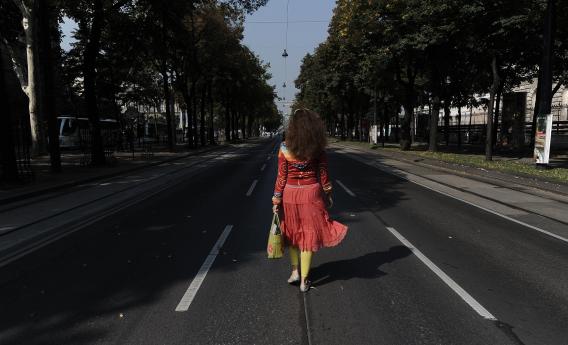India has many identities, many facets. One of its identities is diversity and multiculturalism. Unfortunately, another one is its notorious identity as the rape capital of the world. The statistics speak loud and clear – there were more than 34,000 cases of rape reported in 2015. And perhaps thousands more went unreported.


Abroad, India is often associated with the lack of safety for women. In the country, New Delhi often bears the brunt of this association. The safety of women is contingent on many factors, but here we will discuss the importance of urban planning as one of them. One of Prime Minister Modi’s chief projects is that of smart cities, under which the government’s target is to develop 100 cities as “smart”. Smart encompasses better infrastructure, transportation, last mile connectivity, better access to water and facilities that are more women, children, elderly and disabled friendly. However, what “smart” has often boiled down to is how far and wide a city’s wifi connection spreads to. As the concept of smart cities is still more or less on the drawing board, there is no better time than now to recalibrate our approach to urban planning to ensure cities are safe for women, and one where women feel liberated, not alienated.
Urban Indian cities have largely adopted the American model of compartmentalization, whereby you work in one part of the city and live in another. This model exposes the safety of women, especially as last mile connectivity is underdeveloped in India’s Tier 1 cities, let alone Tier 2 and Tier 3. This model is discomforting because activity essentially comes to a halt in one part of the city after a certain hour of the day. However, if work spaces are intermingled with residential properties, then larger parts of the city will be alive and bustling, allowing women to feel safe out on the streets. More recently, the concept of gated communities has become increasingly popular in young cities such as Gurugram, which has birthed life only in the last decade or so. In a country like India, where economic disparities are stark, gated communities assist in reiterating the feeling of economic inequality, expose the obvious gap between the haves and the have-nots, along with harbouring exclusivity.
In close proximity to posh gated communities exist slum communities where reside are people who belong to the low economic category, and who often work for people in the higher economic strata. According to the 2016 UN Habitat report on World Cities, gated communities sprouted in large numbers as a response to increasing levels of violence. But there has been little evidence to prove that they help in reducing levels of crime, and in fact, contrary to their motive, instill in residents a false veneer of safety. This kind of disproportionate and inconspicuous segregating can actually foster resentment and frustration among people – feelings that manifest themselves physically through violence.
In a bid to beautify its cities, urban planners are trying to erase street hawkers and vendors off the streets. Vendors are an integral part of “Indianness” – it’s an ubiquitous feature of all cities in the country from Kerala to Shillong to Gujarat to Kolkata. On top of adding unique flavour to the country, they also act as “eyes on the street”, which is a theory proposed by Jane Jacob in 1961. According to her, a city’s safety is increased if there are “natural” eyes on the street, passively overlooking the hustle-bustle in their areas. They will prevent cities from appearing desolate, covering them with a feeling of safety, in the very least. There’s no doubt that India’s relationship with women and their safety struggles can only be solved if the root problem is addressed. So long as the country’s primarily patriarchal mindset and men’s over-imposing masculinity is not addressed and dissolved, every other solution will only serve as a short-term solution. In the rat race to become modern, residents may be left with cities that are nothing but façades of modernity, reeking of regressiveness. Such cities don’t ensure the safety of women, but rather endanger it.
About the Author


Shreya Kalra professionally identifies herself as a journalist with a keen interest in gender issues. She has previously worked for media organisations in the UK, UAE and India. Her global upbringing has instilled in her a deep sense of curiosity about the world’s cultures and people’s behaviours, and led her on a quest to find out the how’s and why’s of human nature and existence.




